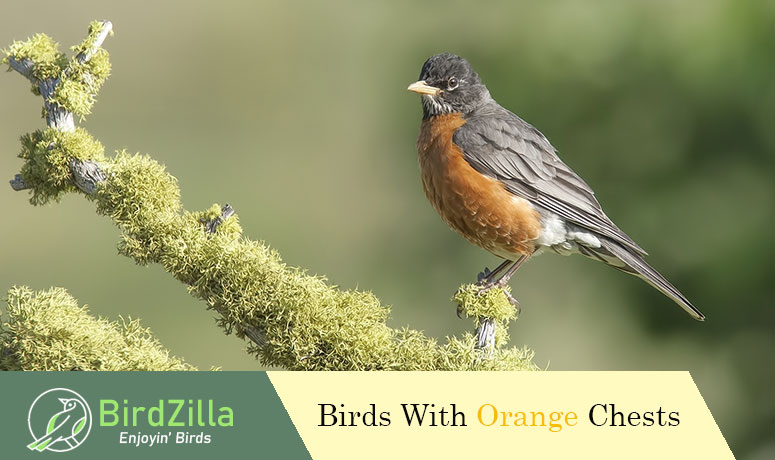
Orange plumage isn’t as common in birds as brown or yellow. However, some of our most common backyard species are beautiful birds with orange chests.
Robins, orioles, and grosbeaks have lovely shades of orange to attract a mate. Some other species use orange feathering as camouflage!
How many birds with orange chests have you seen? Where do they live? See this article to learn about 15 beautiful birds with orange chests!
On this page
#15 Red Knot
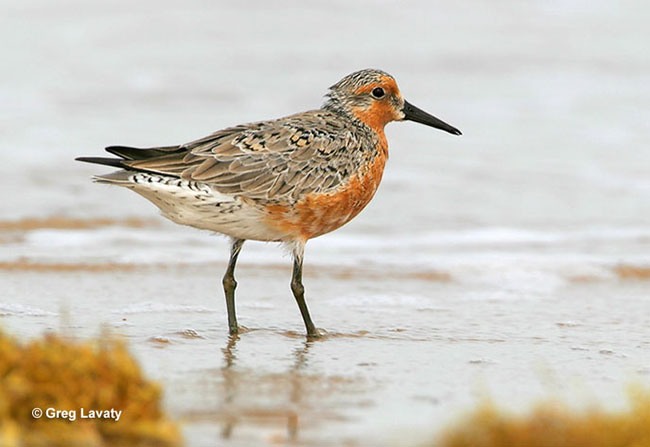
The Red Knot is a hefty, robin-sized sandpiper with a straight, short to medium-sized beak. In late spring and summer, these pretty shorebirds have dark orange on their head and underparts.
Both sexes look alike and also have fairly short, greenish-gray legs, a pale gray rump and tail, and mottled gray upperparts.
In fall and winter, Red Knots lack orange and are plain gray above, have a dark line through each eye, gray chest, and white belly!
This species breeds in the Arctic tundra of northern Canada and Alaska, and winters in coastal habitats from California and Massachusetts south to Central America.
#14 American Woodcock
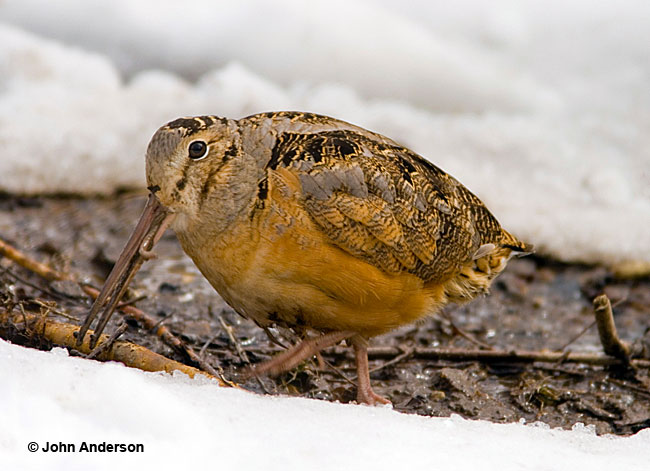
American Woodcocks are odd, rotund members of the sandpiper family. They have short tails, and long, pale beaks. This fun bird also has mottled brown and gray upperparts, and a pale gray neck. It has pale orange on its face, and is pale orange on most of its underparts.
Both sexes of the American Woodcock look the same and are sometimes seen as they use their short legs to walk in and near second-growth and wooded areas. These unique birds use their long beaks to probe damp ground for worms in southeastern Canada and most of the eastern USA.
#13 Red-breasted Nuthatch
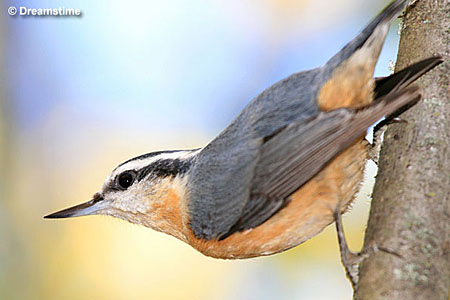
Red-breasted Nuthatches are cute little birds with blue-gray upperparts and light orange chests. They also have a slender, slightly upturned beak, orange underparts, and black and white in their short tail.
Both sexes look similar but females have gray crowns and paler underparts than their male counterparts.
This species is a common breeder in coniferous and mixed coniferous forests in Canada, the western and northern USA, and the Appalachians. In winter, we also see them foraging in conifers in most of the lower 48 states.
Red-breasted Nuthatches are almost always seen in conifers and are often located by hearing their distinctive nasal calls.
#12 Flame-colored Tanager
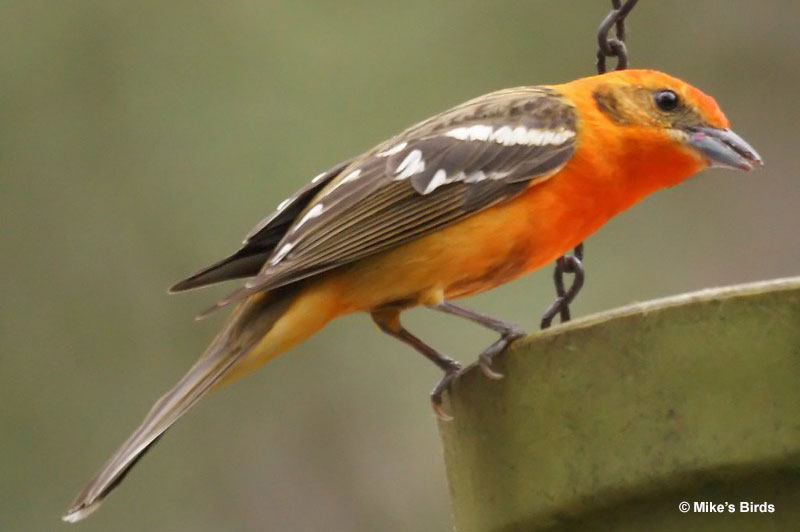
Flame-colored Tanagers are fair-sized tanagers with two pale wing bars, some white spotting in their dark wings, and black and white tails. The rest of the male’s plumage is red-orange with dark streaks on its back and a dark mark on his face.
Females have the same plumage pattern as males but are yellowish instead of orange. We can recognize this species by its colors, dark mark on its face and back, and white markings on its wings.
Flame-colored Tanager mostly occur in montane forests from Mexico to Central America. However, they also occasionally show up in the mountains of southeastern Arizona and western Texas.
#11 Rufous Hummingbird
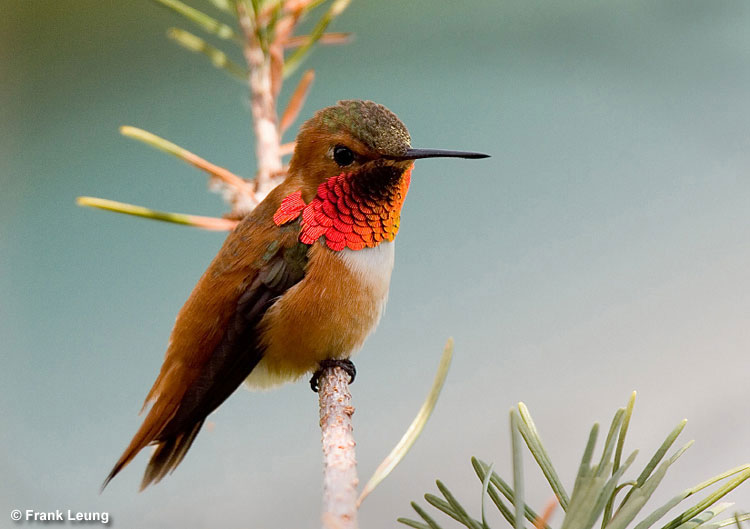
Rufous Hummingbirds are small birds with a tiny white spot behind each eye. Males are mostly orange with some green on their wings, a white upper chest, and a coppery, red-orange throat.
They also have an orange tail with a dark tip, and some males have green on their upperparts. Female Rufous Hummingbirds are green above and have white and buff below. They also have orange and green tails with a black and white tip, and green and red-orange speckling on their throat.
Rufous Hummingbirds breed in coniferous forests from southern Alaska to Oregon and Idaho. They migrate through the western USA to wintering grounds in central Mexico.
#10 Barn Swallow
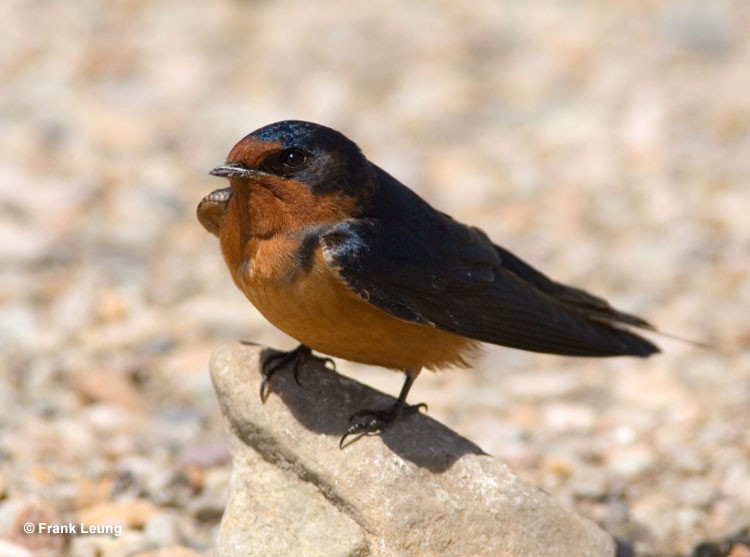
Barn Swallows are common, elegant birds that swoop low over farm fields and other open habitats. With a close look, we can also see that they are gorgeous swallows with dark, steel-blue upperparts, and orange chests (although depending on where you see them, they might have varying degrees of white).
Females resemble males but are paler below. Barn Swallows can be recognized by their plumage and long, forked tail.
These blue/black birds with orange chests are easy to see and common summer birds from southern Alaska to the southern USA and Mexico. In fall, their migrate to tropical regions for the winter.
#9 Eastern Bluebird
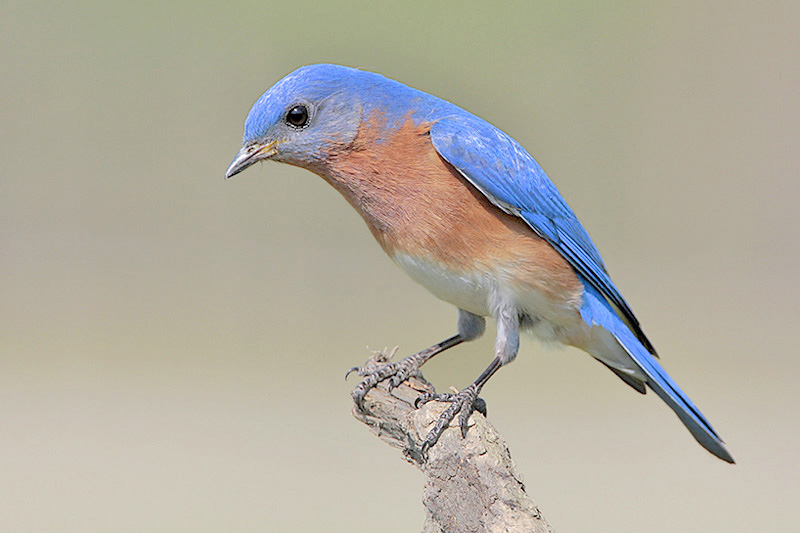
Photograph © Greg Lavaty.
Eastern Bluebirds are small, lovely thrushes that live in meadows and other semi-open areas. Males are blue birds with orange chests, with the rest of their underparts white.
Female Eastern Bluebirds resemble males but are paler and with grayer upperparts. They also have a bit of white behind their eyes.
Thanks to nesting boxes put up for this species, it has become a common bird in many parts of its range. Eastern Bluebirds occur east of the Rockies in southern Canada and throughout the eastern USA. We also see them in the mountains of southeastern Arizona south to Central America.
#8 Varied Thrush
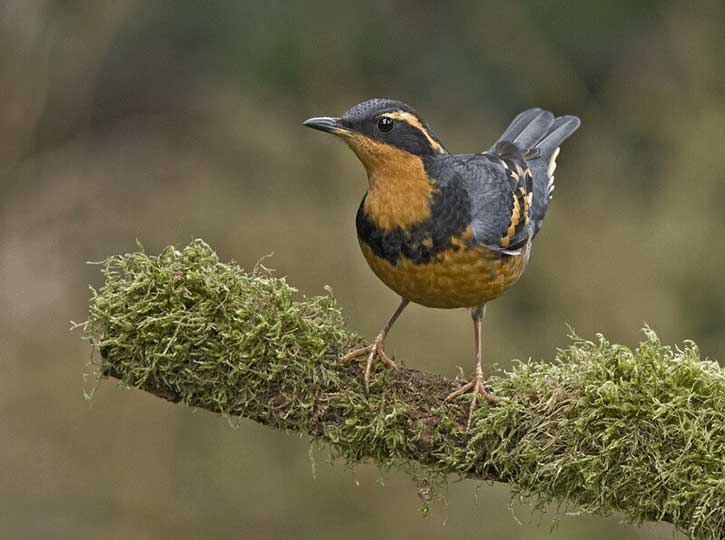
© Alan Wilson
The Varied Thrush is a unique, robin-sized bird black bird with orange chest. They also have a white belly and undertail, and gray wings with pale orange markings.
Male Varied Thrushes have a black band on their chest, narrow black mask, and a pumpkin-orange eyebrow. Females look like a pale male with a gray band on their chest.
We see these beautiful birds in cool temperate rainforests and coniferous woods from Alaska south to California. They also have a tendency to wander and have show up far outside their usual range, even as far as Florida and Ontario!
#7 Western Bluebird
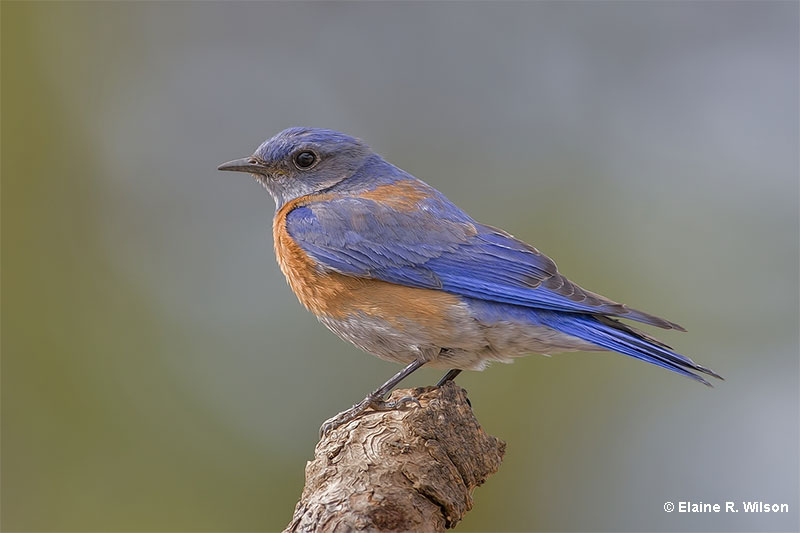
The Western Bluebird is a fairly common bird of western pine and oak woodlands. Like their eastern counterparts male birds are blue and have an orange chest. They also have blue and white on their belly and undertail.
Females are like pale males with much more grayish plumage, although they also have some dark orange on their chest and sides. This pretty bird occurs from British Columbia south to Texas and Mexico.
We can separate them from Eastern Bluebirds by their range, darker colors, blue or gray throat, and blue or gray on their belly.
#6 Baltimore Oriole
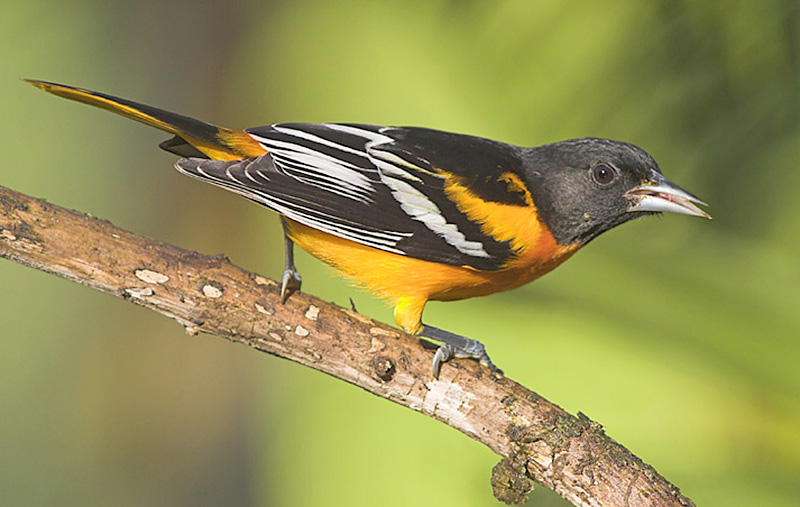
Baltimore Orioles are gorgeous, common song birds of deciduous forests, parks, and other wooded habitats. The well-known plumage of the male is bright, deep orange with a black head and back, and black and orange tail. They also have white markings on their black wings.
Females lack the black head and are paler orange, more dingy-orange above, and have two distinct white bars on dark wings.
In most of their breeding range, Baltimore Orioles are the only orange oriole species present. We see these beautiful birds east of the Rockies in central and southern Canada and throughout the eastern USA.
#5 Allen’s Hummingbird
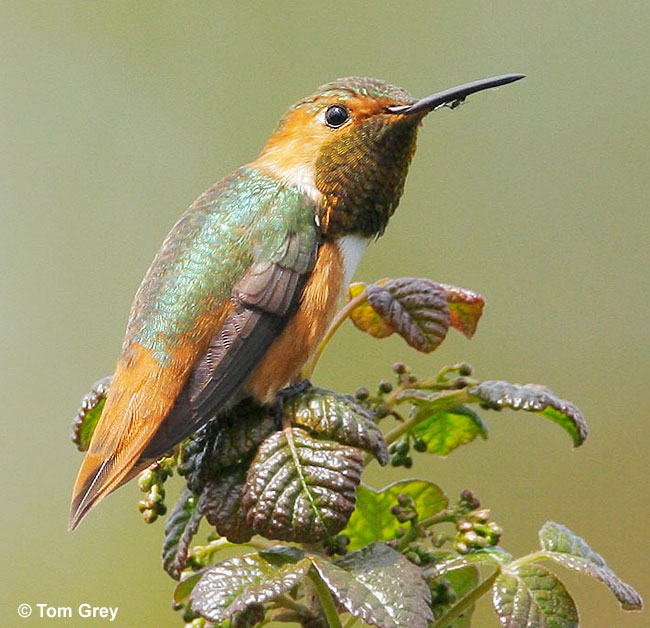
The Allen’s Hummingbird is a tiny hummingbird with an orange chest. These little birds are green above, and have some white on their upper chest.
They also have a small pale spot behind each eye, glittering, fiery-orange throat, and an orange tail with bits of green. Females are much paler birds with green upperparts, orange and green tails with a black and white tip, and some orange and green speckling on their throats.
In their breeding range, Allen’s Hummingbirds are easily seen in scrubs and at feeders. After breeding, they migrate to Mexico.
#4 Bullock’s Oriole
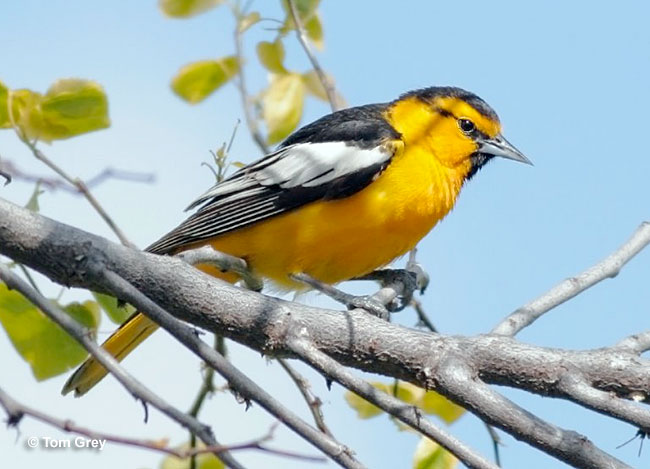
The male Bullock’s Oriole is a beautiful, bright orange song bird with a narrow black throat, black line through its eyes and black crown. It has a black back, orange rump, and black and orange tail. Males also have a lot of white in their wings, especially on their shoulders.
Female Bullock’s Orioles are patterned like pale males with much more yellowish plumage and white bellies. They also have distinct white wing bars and streaked backs.
Bullock’s Orioles are common birds that live in riparian zones and other woodlands in the western half of the USA and parts of western Canada.
#3 Black-headed Grosbeak
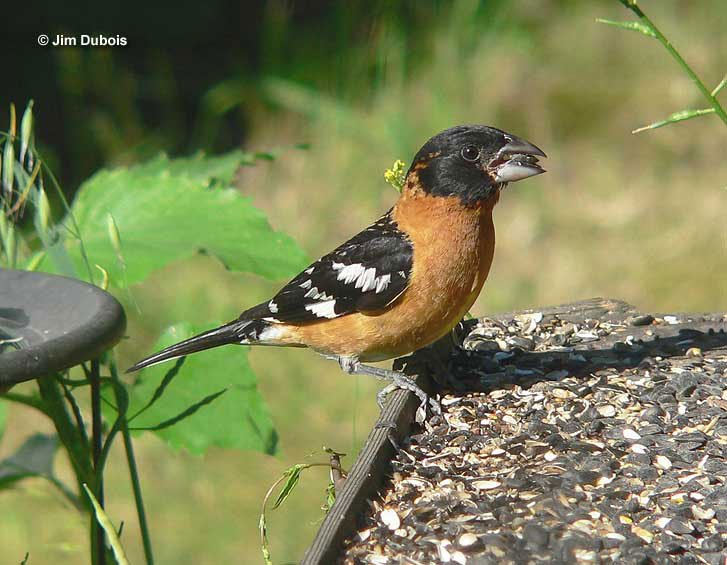
Black-headed Grosbeaks are chunky, finch-like birds with stout grayish beaks. Males have black heads and beautiful deep orange chests and bellies. They also have pale streaks on their black back and white markings on their black wings and tail.
Female Black-headed Grosbeaks are paler, sparrow-like birds with a pale eyebrow and mostly gray-brown above upperparts. They also have some fine streaking on their white or buff underparts.
We see Black-headed Grosbeaks in oak and conifer woodlands, parks, and other places. These pretty birds occur west of the Rockies from British Columbia to Mexico.
#2 Hooded Oriole
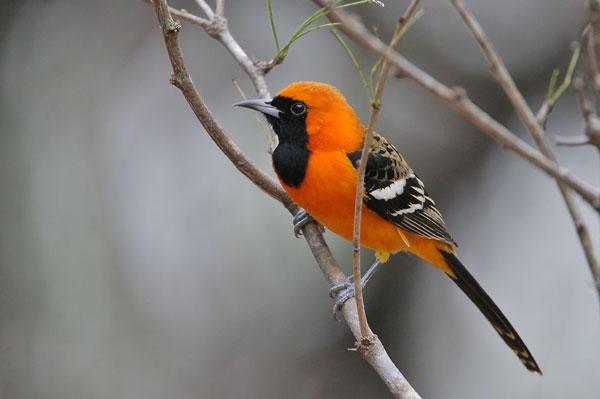
Photographs © Greg Lavaty.
Hooded Orioles are slender, smallish orioles with a long, rounded tail, and a sharp beak. Males are deep orange with a black throat, back, and tail. They also have a white shoulder and white markings on black wings.
In the western part of their range, male Hooded Orioles are a paler shade of orange. Females are yellowish with hints of pale orange, a black throat, gray back, and gray wings with white shoulders.
This beautiful oriole can be separated from other orioles by their long tail, white shoulder, and black throat. We see them in brushy and arid habitats in California, southern Texas, and parts of the southwestern USA.
#1 American Robin
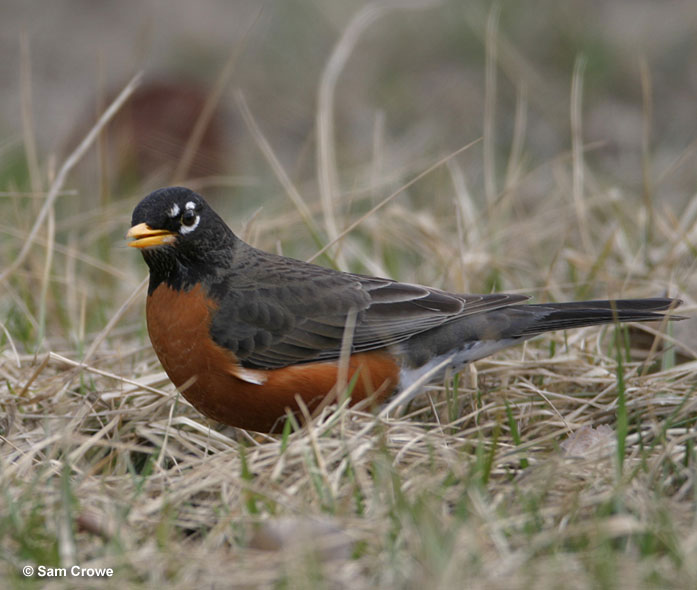
American Robins are familiar thrushes that are dark gray above, orange or brick red below, and have white on their lower belly and undertail. Males have a blackish head with bits of white around their eyes and on their throat. They also have darker, richer colors on their underparts.
See more: Birds that look like robins
Females are like a pale version of the male but with more pumpkin-orange underparts. Like males, they also have yellowish beaks, and a bit of white on the outer corners of a dark tail.
These familiar birds forage for worms on lawns and in other park-like situations. They are one of the most common bird species in North America.

